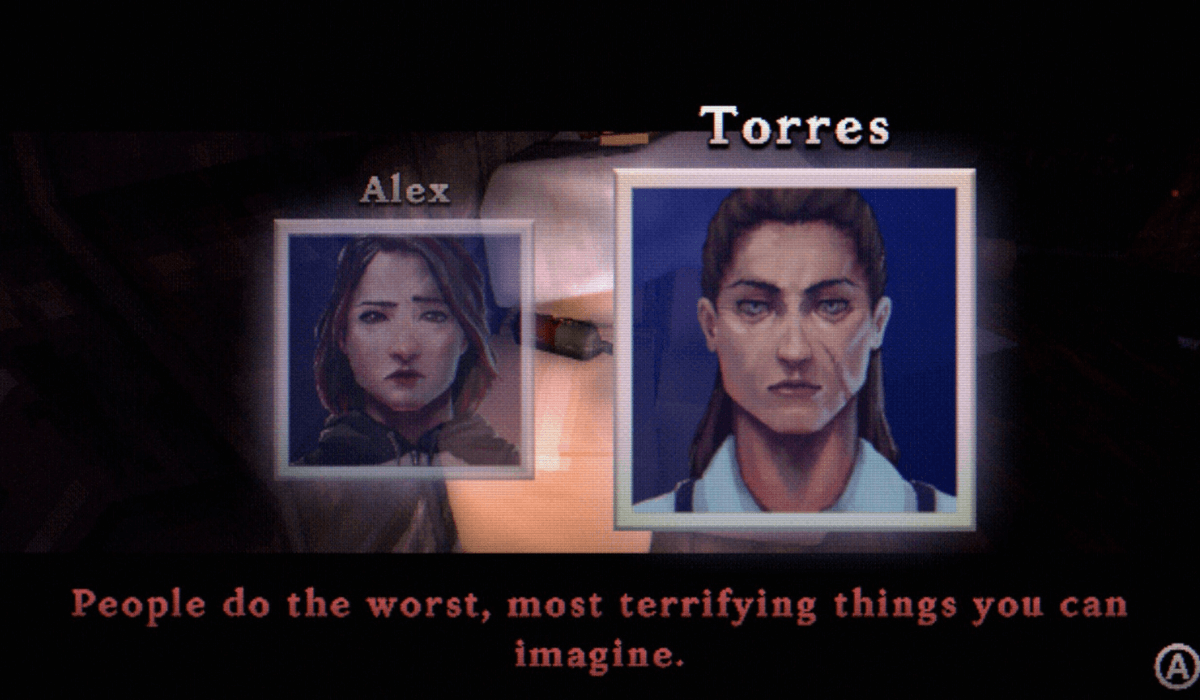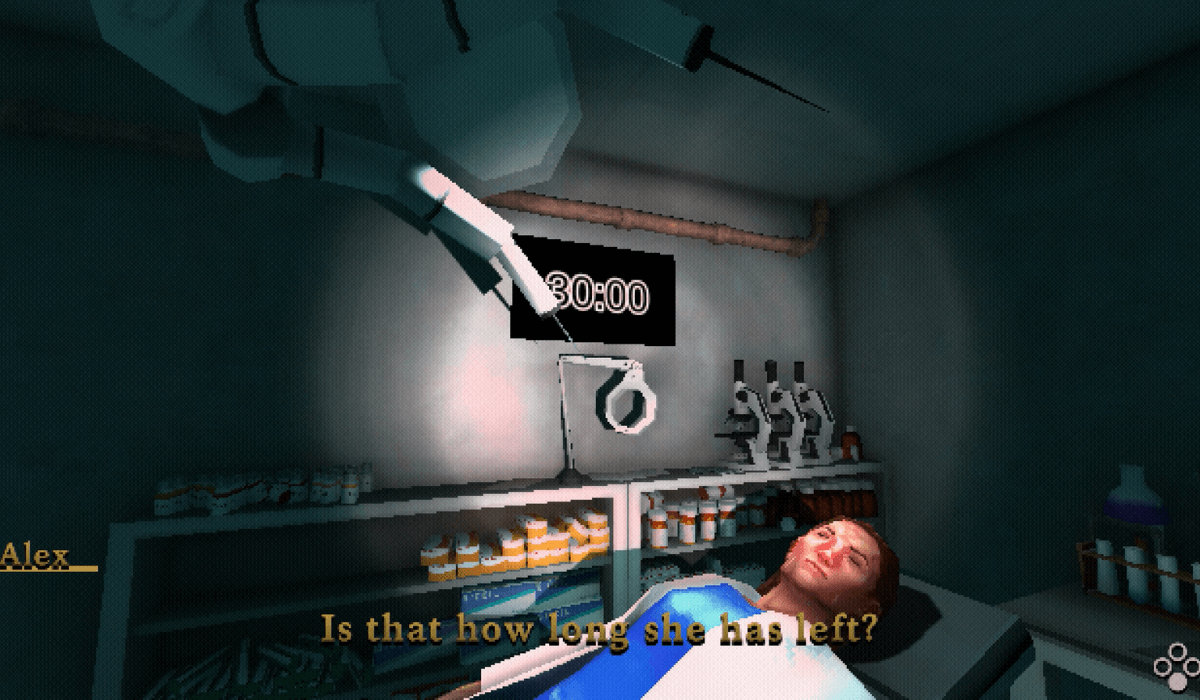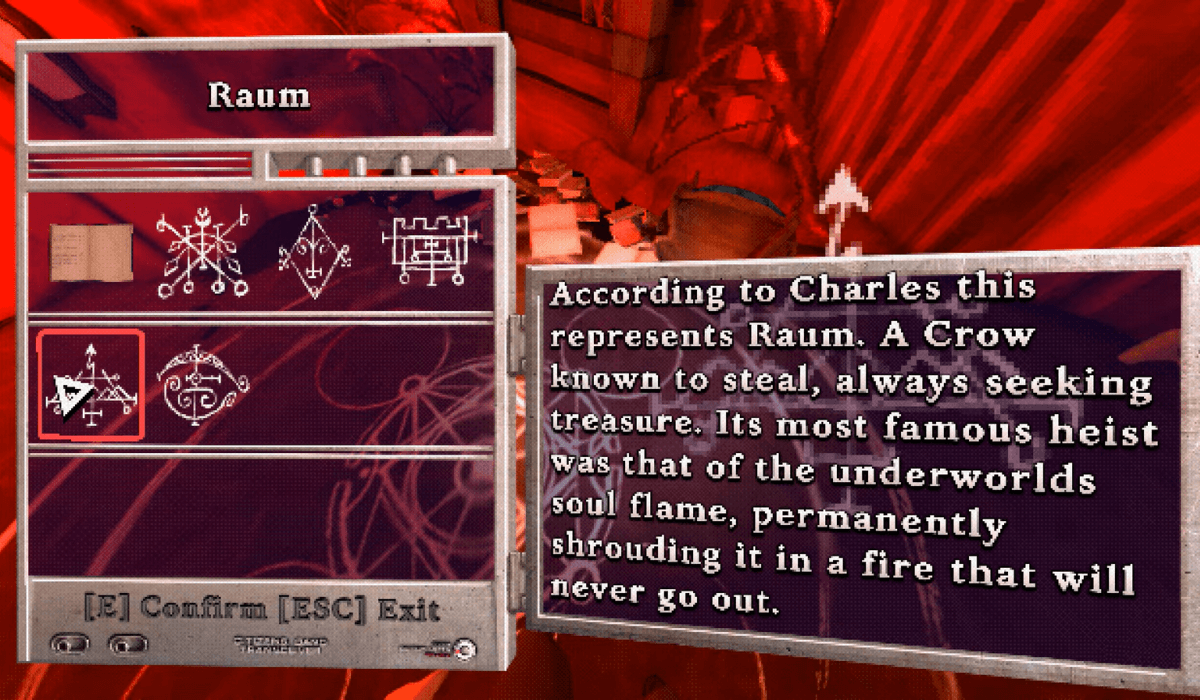
Despite the plethora of high-definition scares out there, low-poly indie horrors have experienced a surge in recent years. There’s an audience out there eager for PS1-style spoopy entertainment. Following the success of their visual novel game Aviary Attorney, Portugal-based studio Vertical Reach decided to trade sparrows for scares. From this came The Tartarus Key, a psychological horror adventure game with both a Saw-esque nature and an eldritch aura.
You play Alex Young, an average teenager who wakes up in a strange mansion. She has no memory of how she got there, but cameras watch her every move. Doors are locked with puzzles and devious contraptions. And it seems as though she is not the only one trapped here. But things take an ominous turn when Alex begins to hear things, see things in her periphery. If she escapes with her life, will her sanity remain intact?

Bump In The Night
For me, psychological horror is only as effective as the atmosphere it creates and the steady build of unease. Oftentimes less is more and a reliance on gross-out bloody scenes quickly becomes tedious. The Tartarus Key gets the balance just right, utilising jump-scares effectively, manifesting a thoroughly unsettling aura and using gore sparingly. As you guide Alex through the mansion, little perturbing details are worked into each room and area. The ever-present security cameras follow your every move. Objects move at the edge of your periphery only to be still again when you turn to face them. A limited hazy draw distance also gives an ominous Silent Hill mist feel but indoors. What could be lurking just beyond the limits of vision? Even the map lends itself to the desperate nature of the situation: hastily hand-drawn with scribbled corrections as more is uncovered.
Alex is but one of many captives in this house of horrors. One of which is the hardened cop-turned-P.I. Torres. After setting up a makeshift base in the living area, Torres becomes Alex’s support on her journey. Providing assistance via radio or theorising the best way to stay safe, she’s a cool—but realistic—head in times of crisis. Incidentally, all of the game’s characters are well-written, thoroughly believable and even relatable. Likeable too, though William is a distinct exception. And once rescued, examining certain objects will trigger an opportunity to talk to them over the radio, learning more about the overarching story and the characters themselves.

Hello Alex, I Want To Play A Game
I’ve always loved sinking my teeth into a good puzzle – it’s the creamy filling of the adventure game cake for me. The Tartarus Key has more than enough helpings, dripping with dread to boot. As you encounter new areas of the mansion, you’re faced with a mix of item and logic puzzles, often combined. From deciphering postcards to mixing unstable chemicals for a poison antidote, they’re all engrossing and pitched at just the right amount of challenge. Even puzzles with frustrating elements—I’m looking at you, Observatory!—can be solved with thorough searching or carefully reviewing the materials you have. There’s very much an escape room feel to some of them, requiring creative problem-solving and rather satisfying to crack. Though this formula can occasionally get repetitive, giving a storytelling element I’ll get to in a moment. But cracking these puzzles can be a matter of life and death, literally.
Each of the fellow captives is subjected to a puzzling deathtrap reminiscent of the Saw series. A little less gorey, but no less gruesome. It’s up to you to help Alex overcome the deadly conundrums. One false step, one minor detail overlooked, and her fellow captives meet a harrowing end. The ability to save scum does take a little of the sting away, but there are multiple endings depending on your rescue success. So it’s certainly worth exploring all outcomes, including those that embrace the uglier side.

Lost In Conversation
A substantial portion of world-building comes from interactions with your fellow captives. Or just Torres if you’ve become a hapless angel of death on your journey. Generally this works quite well, but a touch more environmental storytelling would have tied the whole experience together. The mansion is full of atmospheric areas and while there are items and aspects that Alex can comment on, the only ones she can examine further are linked to puzzle progression. Admittedly some may prefer this, but in terms of unearthing lore, it would feel a little more organic. Too much conversation and explaining can occasionally flirt with exposition dumping.
And, though much of the story is revealed in these conversations, players are still left a little in the dark about certain plot points. The true ending mentioned earlier will explore some unanswered questions but also still skirt around the edges of others. Even here it’s not especially clear what part Alex plays in all of this and the significance of what’s truly behind the cameras. Again, this may be appealing for some, leaving room for imagination and interpretation. But after considerable build-up, it can be slightly anticlimactic to be left with further ambiguity.
Smooth Grit
I said earlier a psychological horror is only as effective as its atmosphere: graphics and audio of course play pivotal roles in its creation. Despite the realistic graphics modern horrors can provide, there’s something unique about the low-poly style. Something grittier, harsher, unnatural. From a time when so much could be done with (comparatively) very little. Perfect for being thoroughly unsettled! While the polygons are sufficiently blocky and PS1-worthy, there’s a delicious crunchy feel to the pixelated edges and details. But this is backed by a slick modern fluidity to its character model and dialogue portrait animation. Combined with the aforementioned limited draw distance, it’s a delightful mix of styles. Steam Deck users may experience some black pixelation around certain borders and floating on certain surfaces, but neither are detracting or game-breaking by any stretch.
As the visuals play with movement at the edge of your vision, so does the sound design, to satisfying effect. Sounds like radio static, grinding metal and shifting rubble startle in moments of calm and leave you suitably on edge. But Josie Brechner’s score is the cherry on top. Reverberating warped sounds mingle with deep bass and an almost trembling beat before crescendoing to crashing pulse-like drums and screaming synth. Each track envelopes you and drives you from flirting with paranoia to heart pounding in your chest knowing someone’s fate in your hands. Brechner has a great flair for creating atmospheric ambient tracks and using samples and sounds from the same tracks to turn the vibe of a scene on a dime. ‘Medical Haze’ and ‘Emergency Transfusion’ are excellent examples of this and well worth a listen!

Final Thoughts
If you’re looking for an unsettling low-poly adventure to get under your skin, The Tartarus Key is right up your alley. With crunchy yet slick visuals, puzzles to sink your teeth into and atmosphere you could cut with a knife, it’s a psych-horror fan’s dream. It occasionally tells a little more than it should show and some key loose ends are left frayed (if not hanging), but it’s very difficult to come away feeling unsatisfied.
A Thumb Culture Gold Award for this portentous perturbing puzzler!

Disclaimer: A code was received in order to write this review.

YouTube | Facebook | Twitter | Instagram | Discord | Podcast
